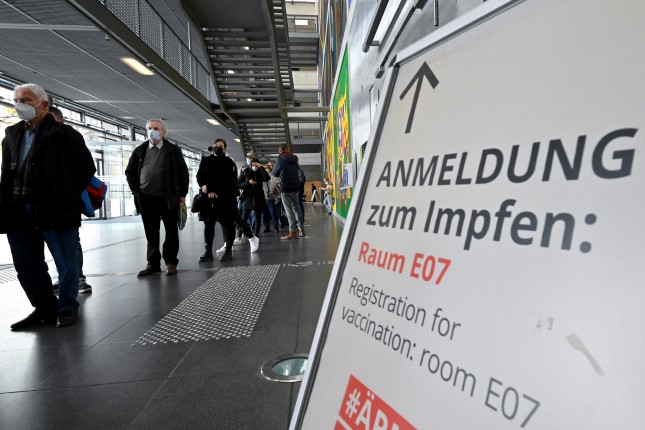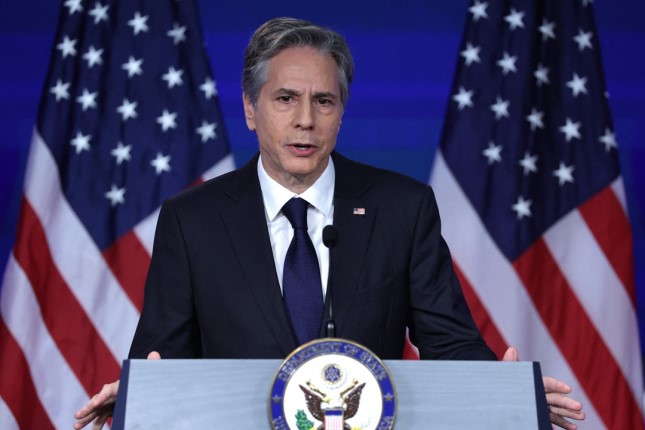According to official figures from the Robert Koch Institute (RKI), 23,264 cases of infection were reported in the last calendar week. Just six weeks earlier, there were only around 13,000, meaning that the number of infections has almost doubled in a short space of time. The data from wastewater monitoring has also shown an increase in infections since the beginning of July. Although this has levelled off somewhat in recent days, 17 locations still reported an increasing incidence last week, while 13 reported a falling incidence.
While the official reporting figures confirm the sharp rise in the coronavirus wave, they can tell us little about the actual scale of the pandemic, as testing and reporting requirements have largely been abolished. However, sites such as SentiSurv—a project run by the Mainz University Medical Centre, which collects data from 14,000 people who regularly test themselves and make their data available—are able to determine incidence rates on this basis.
SentiSurv data indicates an incidence rate that would equate to one in 50 inhabitants being newly infected every week. The highest incidence figure ever reported by the Robert Koch Institute during the entire pandemic was 1,543 in March 2022. According to SentiSurv, the incidence level has risen by over 500 since the beginning of November alone.
Even if the numbers of hospitalisations and deaths are lower than in the first years of the pandemic as a result of an increased vaccination rate, the virus has by no means become harmless. According to the State Statistical Office, COVID-19 was still one of the three most common causes of death in 2022, along with coronary heart disease and dementia. COVID-19 was identified as the main cause of death in 52,357 instances. And this does not include the cases in which COVID-19 was only documented on the death certificate as a concomitant illness. These figures will be published at a later date.
Markus Beier, chairman of the German Association of General Practitioners, explained in Die Welt: “For particularly vulnerable groups without appropriate vaccination protection, coronavirus can still be a serious illness.” And epidemiologist and virologist Klaus Stöhr warned in the Frankfurter Rundschau with regard to the wave of infections: “I believe that it will be more severe this winter.”
Even when the infection runs a relatively harmless course this can be followed by extremely severe long-term consequences (Long COVID). This can affect the heart, lungs, kidneys and practically all organs.
The deadly effects of the pandemic are particularly evident in the continuing decline in life expectancy. As the Federal Institute for Population Research recently announced, life expectancy in Germany fell for the third year in a row in 2022. Since the start of the pandemic, life expectancy has fallen from 78.7 years to 78.1 years for men and from 83.5 to 82.8 years for women.
Another worrying aspect of the current autumn and winter wave is the spread of new variants. The dominant variant at present is the Omicron subvariant EG.5, also known as “Eris,” which accounts for almost half of infections. Eris, which has been categorised as a “variant of interest” by the WHO, already has a growth advantage and better immune escape properties.
The sub-variant BA.2.86 “Pirola,” which was detected for the first time in Germany at the end of August, also accounts for 14 percent of infections. Pirola has around 30 mutations in the spike protein compared to its predecessor variants. These many changes in the genetic material are particularly worrying as they could make it more difficult for the body’s defences to recognise vaccinated and recovered people.
Many scientists are currently sounding the alarm about the Pirola offshoot JN.1, which is responsible for almost 5 percent of infections in Germany. JN.1 contains a mutation which, according to laboratory results, has a significantly better immune escape than Pirola. The American scientist J.P. Weiland therefore warns: “A change in the symptom profile or severity cannot be ruled out. ... Additional mutations in JN.1 with an even higher transmissibility are to be expected.” Many experts assume that JN.1 will dominate cases worldwide in the coming months.
The high infection numbers are already causing a nationwide wave of illness, especially in schools and nurseries. “The staffing situation in many primary schools in the country is on edge and in some cases is below the calculated staffing budget,” said Edgar Bohn, chairman of the Primary School Association, to RedaktionsNetzwerk Deutschland (RND). Depending on the levels of sick absences, some locations will no longer be able to fully compensate for staff shortages from their own resources.
“Many nurseries across Germany are currently struggling with a high number of staff shortages,” Waltraud Weegmann, chairwoman of the German Daycare Association, also told RND. Due to the acute shortage of skilled labour, urgently needed substitutes were lacking. Daycare centres therefore often had to reduce opening hours due to the legally prescribed staffing ratio. “This usually happens gradually, groups are merged, or children are only looked after on individual days,” says the head of the daycare centre association. “Ultimately, nurseries or groups can be partially or completely closed.”
Numerous hospitals are already responding to the rising number of infections by introducing compulsory mask wearing or restricting the number of visits. At Tübingen University Hospital, masks have been compulsory for visitors, outpatients, and staff in direct contact with patients since last week. Marburg University Hospital has also introduced a mask requirement and restricted visiting hours to protect patients from infection.
At Frankfurt University Hospital, masks are mandatory in-patient care. At Frankfurt Höchst Hospital, visitors must wear FFP2 masks and at Darmstadt Hospital, the mask requirement is limited to “high-risk areas” such as oncology or the intensive care unit.
All government parties at federal and state level are directly responsible for this catastrophic situation, as they have subordinated health to profits and have long since ended all protective measures. The consequences of this murderous pandemic policy were summarised in a letter from 15 leading Austrian doctors back in September:
“Since the removal of mandatory protective measures in the medical field, all patients, including highly vulnerable individuals, are being exposed to the risks of a SARS-CoV-2 infection in primary care settings as well as in hospitals. Many people have no way to reliably protect themselves in healthcare settings and are thus forced to contract COVID-19.
“Policymakers have declared the pandemic over and equated SARS-CoV-2 with a rhinovirus. However, COVID-19 is neither over nor a harmless infection without consequences. Medical professionals must take an exemplary role and act to protect all people, and NOT continue to submit to the pressures of society, media, and politics.”
Source: World Socialist Web Site.































